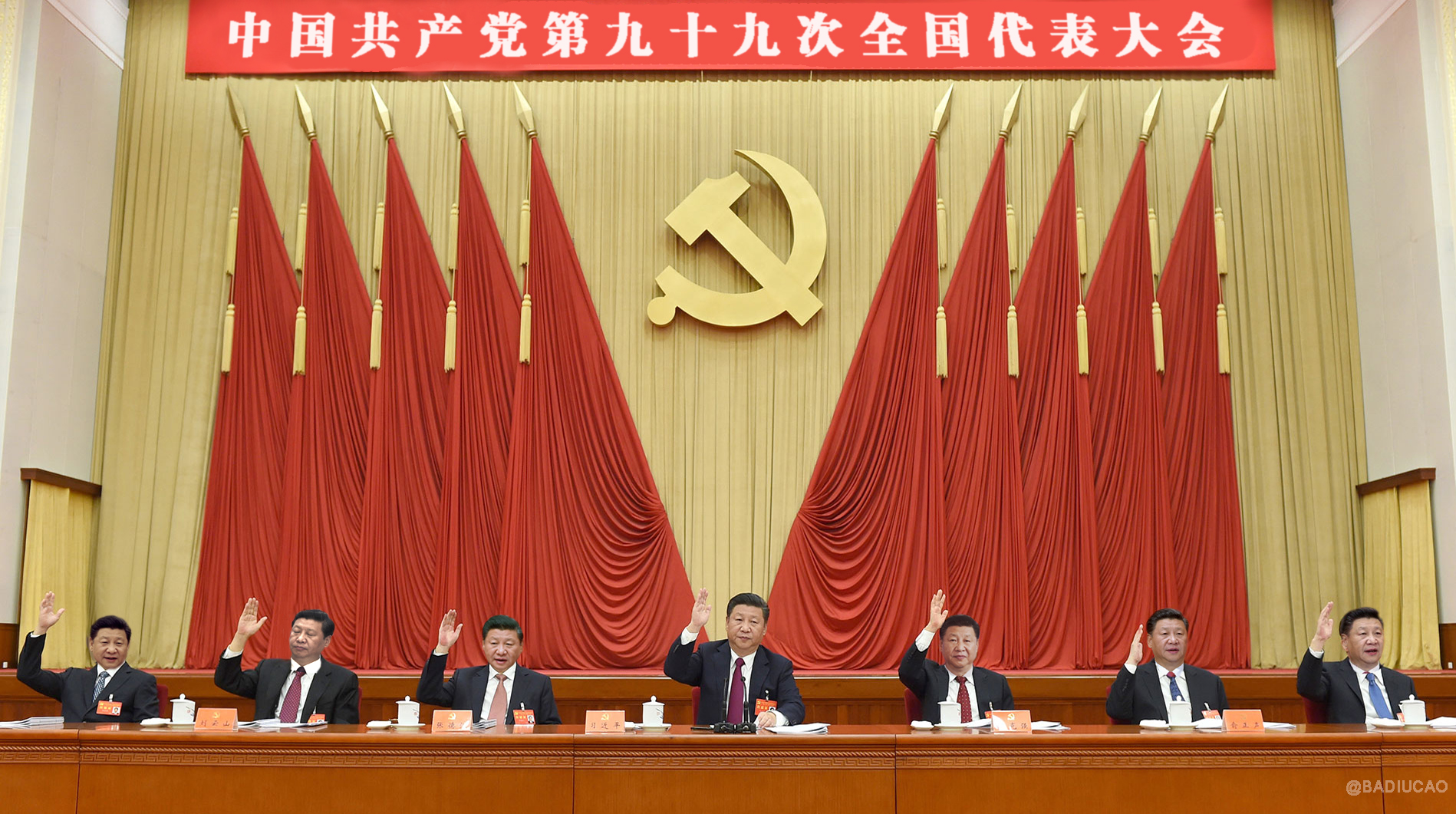In the run-up to the 19th Communist Party Congress in Beijing, China watchers are busy making and analyzing predictions of who will be promoted to the powerful Politburo Standing Committee, a group of seven who in effect run China. But amid such speculation, few doubt that the congress will more formally enshrine the power President Xi Jinping has consolidated over the past five years, even if it is not yet clear what form this enshrinement will take. In Foreign Policy, Victor Shih and Jude Blanchette look at how and why Xi has been able to achieve such political dominance and what it means for the future of China. The 19th Party Congress, according to their report, “presents a crucial test for just how close Xi Jinping is to reaching his goal of a unified CCP under his unassailable command”:
Since assuming leadership of the party in 2012, Xi has used his first five-year term to prosecute a multi-pronged attack on rival party and government officials, patronage networks, and institutions within the party-state — all with the goal of eliminating competing centers of power and the much-maligned “vested interests.” New data show that this has, for Xi, been a massive success. And this week’s 19th National Party Congress will further Xi’s cause. But in the long term, the dominance of a single leader instead of the consensus rule of the past three decades may end up sabotaging China’s own grand ambitions.
Xi’s goal is not to eliminate all competing individuals and ideas within the party — that would be impossible in an organization of 89 million members. Rather, the clear objective is to eradicate the organizational means to establish and sustain patronage networks that are not controlled by Xi or his clear close allies. The recent disassembling of the Communist Youth League, the strengthening of party committees within state-owned enterprises, and the “four consciousnesses campaign” of loyalty to the party and Xi are just some examples of Xi’s demand for all entities within China to be unified under his command.
[…] Some have speculated that Xi has used his first five-year term to focus on “politics” in order to turn to “economics” in his second term (i.e. to use his newly acquired political authority to impose liberalizing and marketizing economic reforms on an intransigent bureaucracy). Driving much of this optimism that Xi will soon unveil himself as a committed economic reformer is the notion that China must reform, therefore it will reform. Declining productivity, an over-dependence on investment for growth, and a bloated state-owned sector are clearly dragging on the Chinese economy, so it would seem obvious, indeed necessary, that these are the areas to be tackled by a more reformist Xi. But what actual evidence do we have that Xi believes in the rules- and market-based economy? Looking back over the past five years, the preponderance of evidence points toward a leader with a vision altogether at odds with the “reformer-in-waiting” narrative. [Source]
In a photoshopped image, CDT cartoonist Badiucao presents his vision of a Standing Committee in which Xi Jinping wields all the power:

Xi Dada’s 19th Party Congress, by Badiucao.
Commentators have reached for a wide range of reference points for Xi’s current and prospective status. Experts quoted by The New York Times’ Chris Buckley in his survey of Xi’s “firm grip on power” described the 19th Congress in terms of coronation and canonization. Arguing at The Financial Times that “China is turning back to dictatorship” after decades of incremental liberalization, Jamil Anderlini wrote that Xi “has consolidated power, purged rivals and encouraged a personality cult to a degree not seen since the death of Mao Zedong in 1976.” Many have noted that enshrinement of Xi’s political vision in the Party constitution might elevate him to the level of Mao and Deng Xiaoping. At the NYT, Ian Johnson commented that “Mr. Xi has embraced traditionalism like no leader since China’s last emperor abdicated in 1912,” describing his China as “stronger and more assertive — but possibly more brittle — than in the past.”
SOAS’ Steve Tsang told The Guardian’s Tom Phillips “in Trumpian terms, [Xi]’s managed to make China look great again.” (While noting Xi’s broad popularity, Phillips also noted that “hardcore objectors call him ‘Xitler’.”) The Washington Post’s Simon Denyer wrote that Xi’s rumored plans for extended and personality-focused rule have invited comparison with Putin. Also at The Washington Post, John Pomfret warned of Xi’s ambitions to reinvigorate Communist ideology as “a pastiche of imperial Chinese philosophy” and Stalinism in place of the supposed pragmatism of recent decades. “Central to Stalin’s teaching is the idea that the creation of enemies is essential for sustaining the rule of a revolutionary party,” Pomfret writes. “Since taking power in 2012, Xi has found new enemies everywhere,” from corrupt officials to rights lawyers to “hostile foreign forces.” Elsewhere, The Wall Street Journal’s Andrew Browne examined the prospect of a Xi-led “digital Leninism” empowered and reinforced by mass surveillance and data collection. “Ultimately,” he writes, “Mr. Xi’s draconian approach takes the notion of ‘Big Brother’ to a new level.” This new level of “smart” central planning, the WSJ’s Lingling Wei wrote elsewhere, comes alongside Xi’s “souring taste for markets” following encounters with their volatility and associated political hazards during his first term.
At East Asia Forum, on the other hand, Macquarie University’s Kevin Carrico offered another caution:
As China scholars and analysts, we all want to have unique insights on emerging developments in China: this week, the Party Congress is grist for the mill. Yet this overvaluation of the meaning of the Congress and corresponding over-interpretation of personnel and policy runs the risk of playing into Xi’s game, portraying this meeting as a major turning point in China’s course under his ‘great man’ leadership. And it misses the fundamental point that the Party Congress is at the end of the day an overhyped symbolic ritual through which many delegates nap, waking up only to give a rubber stamp to processes that were already well underway. [Source]
Samuel Wade contributed to this post.
 You can send support Badiucao by buying “Watching Big Brother: Political Cartoons by Badiucao,” available in EPUB and PDF formats. The book covers the early years of Xi’s presidency, from December 2013 to January 2016. No contribution is required, but all donations will go to Badiucao to support his artwork. CDT is also selling merchandise featuring Badiucao’s work in our Zazzle store. See also a Q&A with Badiucao in which he discusses his artistic and personal influences, and his earlier cartoons for CDT.
You can send support Badiucao by buying “Watching Big Brother: Political Cartoons by Badiucao,” available in EPUB and PDF formats. The book covers the early years of Xi’s presidency, from December 2013 to January 2016. No contribution is required, but all donations will go to Badiucao to support his artwork. CDT is also selling merchandise featuring Badiucao’s work in our Zazzle store. See also a Q&A with Badiucao in which he discusses his artistic and personal influences, and his earlier cartoons for CDT.






